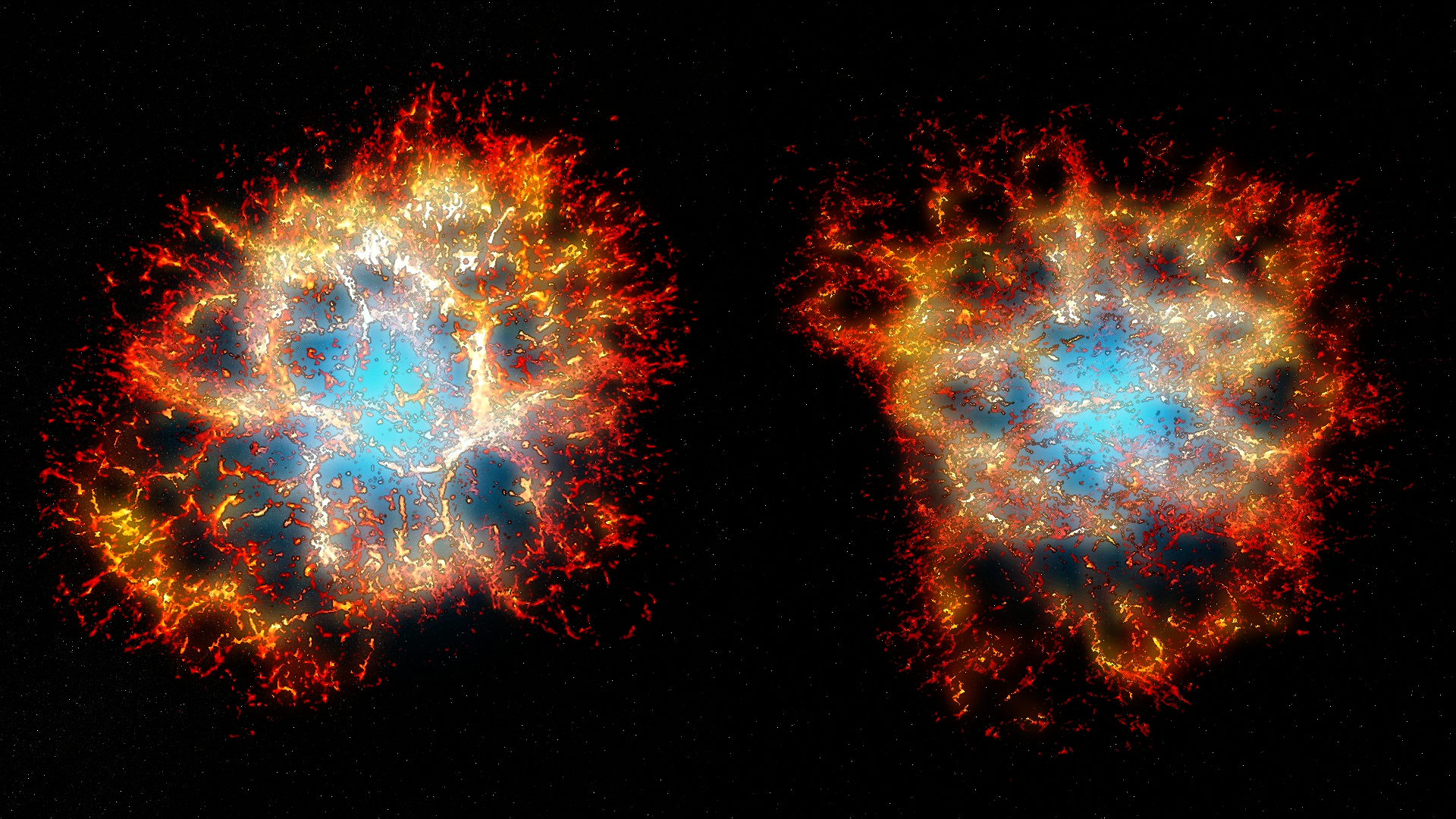
Getting at the detailed structures of distant objects is one of the reasons astronomers are constantly building larger or more sensitive telescopes and instruments. Just like you may not be able to figure out if it is a friend walking down the sidewalk across a particularly wide street, but you know that it is a human walking, astronomers can often tell they are looking at a type of object — a spiral galaxy or a supernova remnant, for example — while they struggle to make out the specific details of the system.
One of the more annoying systems astronomers have been trying to understand is the Crab Nebula or M1. This giant glowing gas structure was created during the explosion of a star in 1054. While there are records of that supernova, observers didn’t exactly have telescopes or cameras in 1054, so modern-day astronomers have to do celestial archeology to try and figure out exactly what kinds of a star blew up.
New research using the Canada-France-Hawaii Telescope in Hawaii has been able to create detailed three-dimensional images of the Crab Nebula and two other supernova remnants, and with their new data, they discovered that all three systems had large-scale rings and filamentary structures. According to the paper, appearing in the Monthly Notices of the Royal Astronomical Society with lead author T Martin: The distribution of filaments follows an intricate honeycomb-like arrangement.”
Exactly how this kind of a structure is made is still being figured out; it appears this is a turbulent mixing process that may have been generated by a lower energy explosion of a star with an iron-core. This is different from what less detailed images led folks to believe had formed the Crab Nebula.
While the physics behind this object is still full of question marks, what is most remarkable about these observations is that the 3D map that was created allows scientists to trace out the filaments in the kind of detail that we haven’t seen before. Rather than a flat image that hints at the structure, they have what looks more like a CT scan of the system that allows scientists to scan through layers and trace out how structures tangle together.
More Information
Royal Astronomical Society press release
CFHT press release
“3D mapping of the Crab Nebula with SITELLE – I. Deconvolution and kinematic reconstruction,” T Martin, D Milisavljevic, and L Drissen, 2021 January 18, Monthly Notices of the Royal Astronomical Society




 Join the Crew!
Join the Crew!
 Escape Velocity Space News
Escape Velocity Space News
0 Comments